Sometimes we holiday in Paris with friends, for fun and the fashion — or with family, to tick off the bucket-list items, from the Louvre to the Eiffel Tower. At other times, Paris is the City of Love, the perfect place for celebrating a romance.
But Paris is equally the ideal city in which to be solo, especially when we yearn to be alone with our thoughts — say, when needing to recalibrate our life direction, or find inspiration for a new creative project.
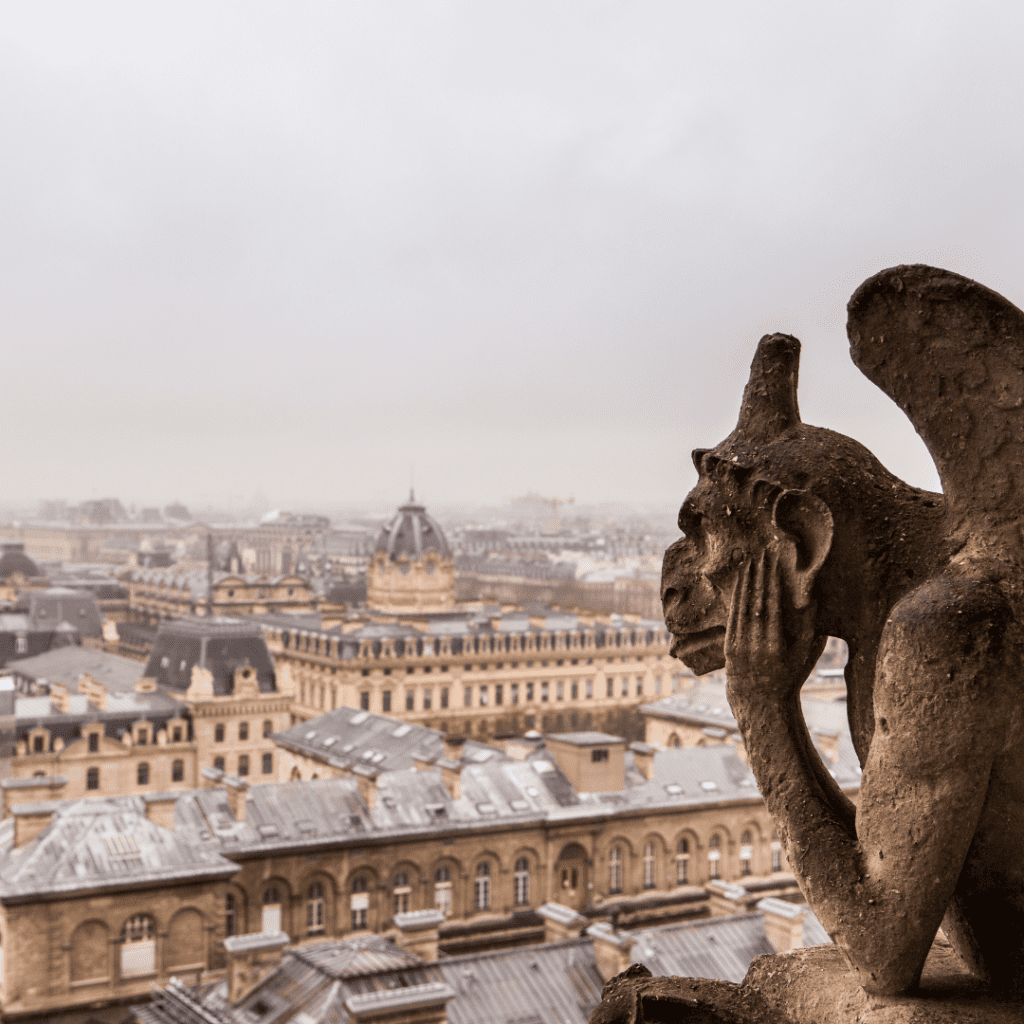
There’s a reason Paris is also called the City of Light, or La Ville Lumière. It earned this moniker in the eighteenth century, when it was the global capital of the Enlightenment, attracting the world’s greatest minds. Paris has been at the forefront of almost every influential philosophical movement ever since.
So, if you do have some deep and meaningful thinking of your own to do, Paris is the ultimate destination. That’s because you’ll be pondering and wandering in the footsteps of so many great minds before you.
Paris, of course, has changed much since the likes of Voltaire pounded its pavements. It’s busier, more distracting. But you can still find many nooks and crannies conducive to contemplation. If you know where to look …
The Sculpture Garden of the Musée Rodin
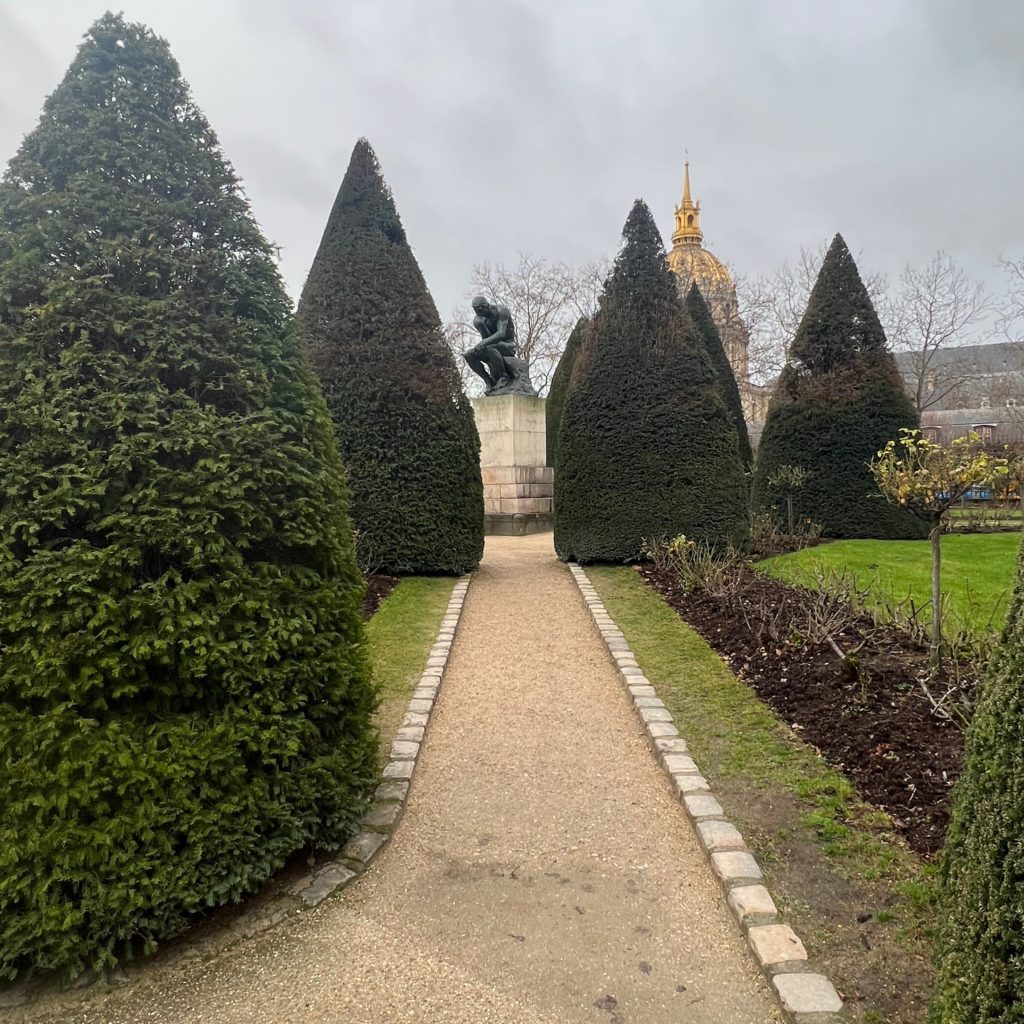
The best way to start off your thoughtful tour of Paris? By meeting up with The Thinker, of course! Rodin’s famous statue muses atop a plinth, amid a grove of boxwood trees, as you enter the sculpture garden (you’ll need to buy a ticket for the museum to access the garden). It was originally conceived in 1880, as The Poet, and represented Dante in Rodin’s The Gates of Hell. But on being given a new, and larger, solo existence in 1904, The Thinker, with its mute but muscular force, became iconic, a symbol of how humans have both the ability to get lost in thought, but also spring into action.

Make sure to roam all about the seven-acre garden; the various artworks, as well as flowering trees, inspire the emotions. And, hopefully, your thoughts.
The Garden of the Musée Carnavalet

You’ll also need to buy a ticket to this museum — dedicated to the story of Paris — in order to access its garden, within the interior courtyard, but the journey through the Parisian past that you take in order to get here is an inspiration in itself. There’s something about being surrounded by so much history. It stimulates the mind, of course. But it also seems to put the present into context. We’re only lucky enough to be on this earth for a finite amount of time, such a place — this courtyard that is a patchwork of old Parisian façades — seems to say. So make that life change or write that book. Seize the moment, and all that!
Parc Monceau
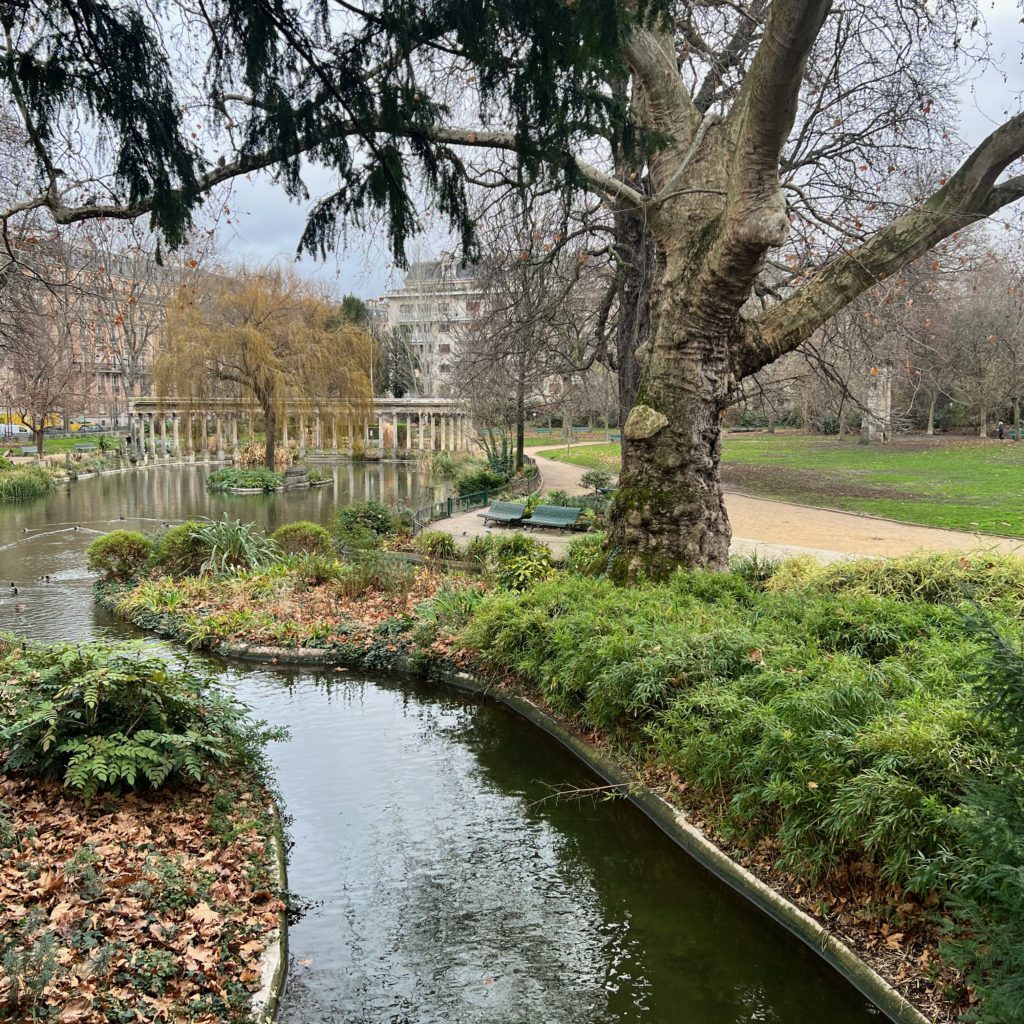
This lovely park is another historical trip. Over here, a curve of Corinthian pillars, repurposed from a funeral chapel commissioned by Catherine de Medici; over there, vestiges from the Hôtel de Ville destroyed by fire during the Paris Commune of 1871. You can sit and ponder the meaning or passing of time or you can meander (like your thoughts), winding about the curving paths of this rambling, English-style park which, being in the upper eighth arrondissement, has less in the way of nearby distractions than the city’s more centrally located gardens.
Jardin du Luxembourg
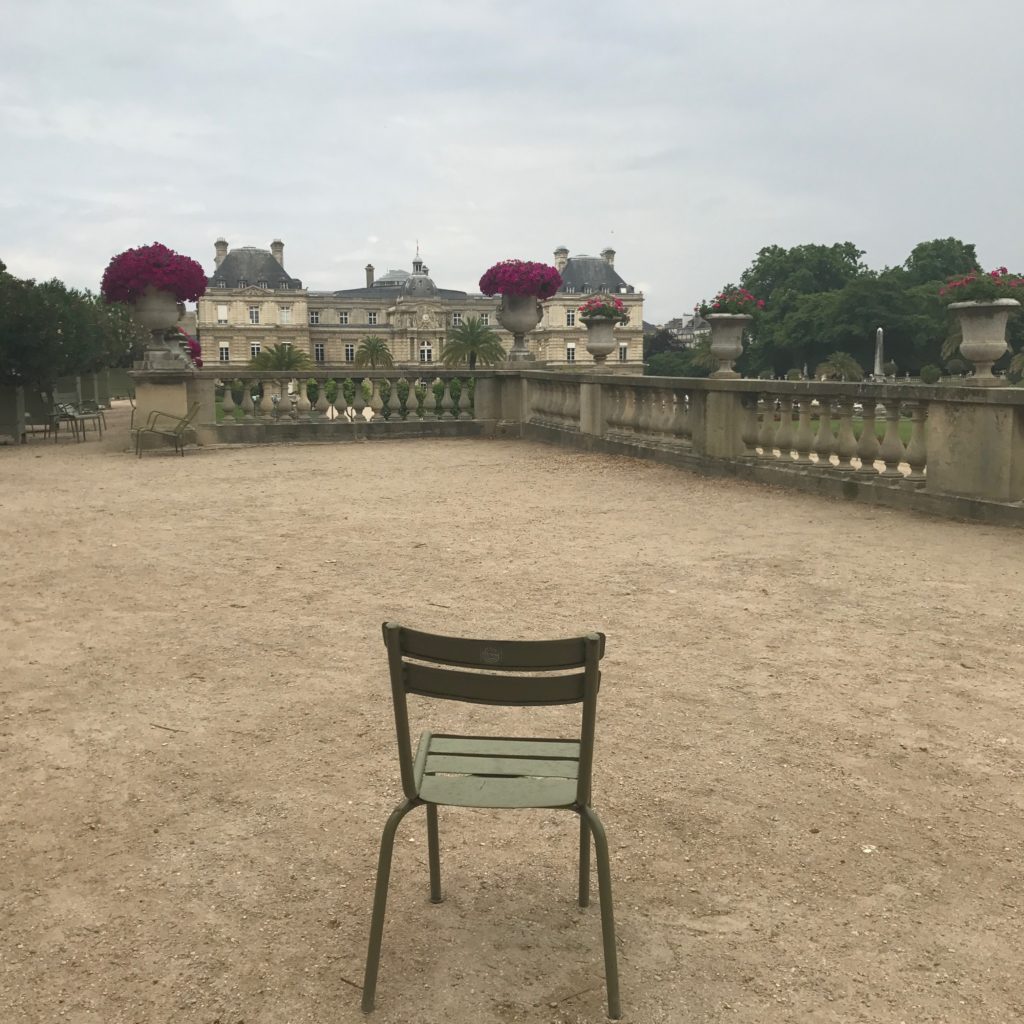
This park, on the other hand, offers up all kinds of diversions. You could, in fact, easily spend a day here and not get bored. But if you’re disciplined in your determination to be with your thoughts, you can walk around the paths, past inspiring artwork (statues of great men and women from Paris history), pounding out those thoughts with each step, as Ernest Hemingway once did.
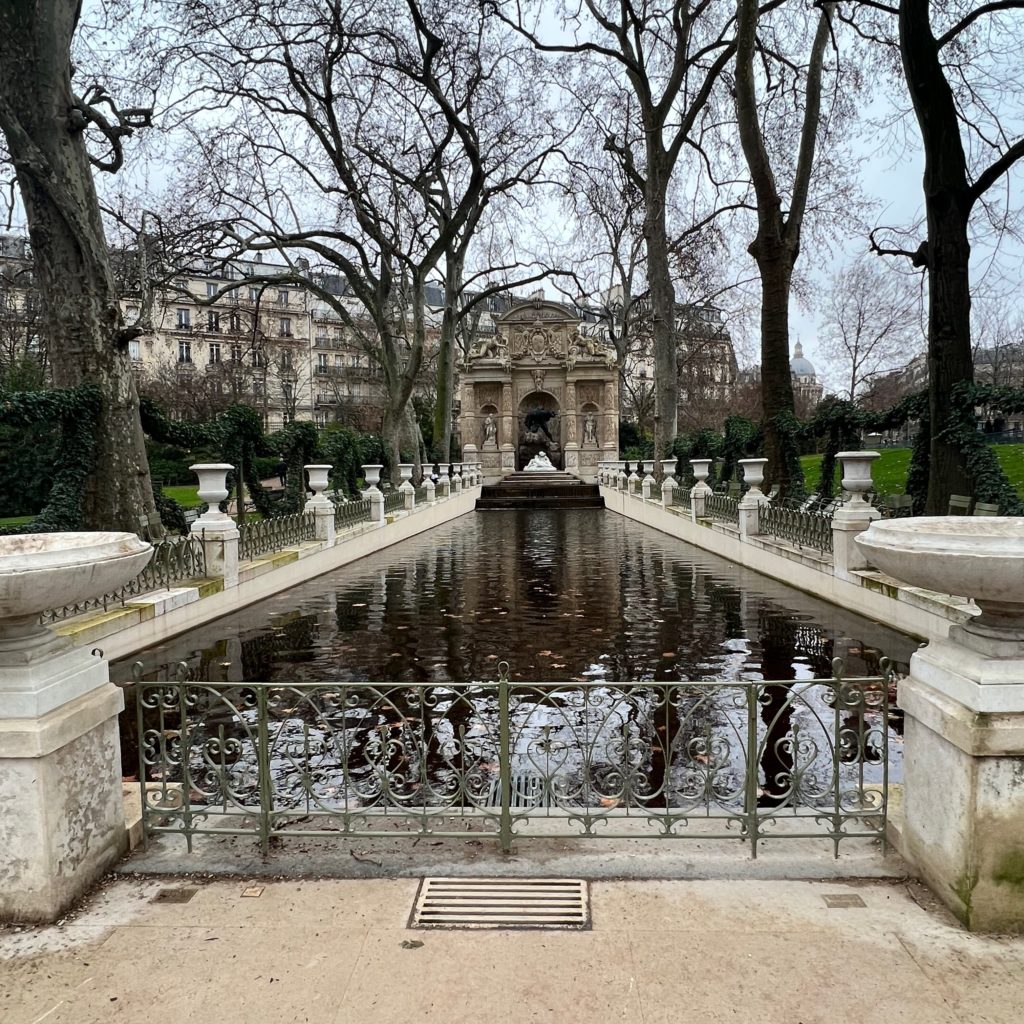
Or you can easily find a quiet nook that will help lull you into a meditative state. Drag a green garden chair to your perfection location, or try the historic Medici fountain, by the basin of water that seems to have a calming, perhaps even mind-clearing, effect. This was once a favourite spot of two young philosophy students, Jean-Paul Sartre and Simone de Beauvoir — certainly no slouches in the thinking department! Speaking of whom …
Café de Flore

You might already have your favourite Parisian café, where you can always claim a just-right table, where the waiter greets you warmly, where you can linger over one coffee for hours, scribbling away in a notebook or just watching the world go by. But make time, too, for the Café de Flore because while that advice might be a cliché, it is so for good reason: few other Parisian cafés have such a rich history of attracting so many philosophical and literary greats. Sartre and de Beauvoir, to name two, made this their office during the war years, when he worked on his budding theory of Existentialism, and she began her seminal proto-feminist thesis, The Second Sex. It’s the kind of past so charged that you can still feel a frisson in the present, and can’t help but want to live up to the intellectually minded tradition. For best results, go at 7:30am, when Café de Flore opens, and when the Instagram crowd has yet to swarm. It will be just you and a few interesting locals. And your brilliant thoughts, of course!
The Banks of the Seine
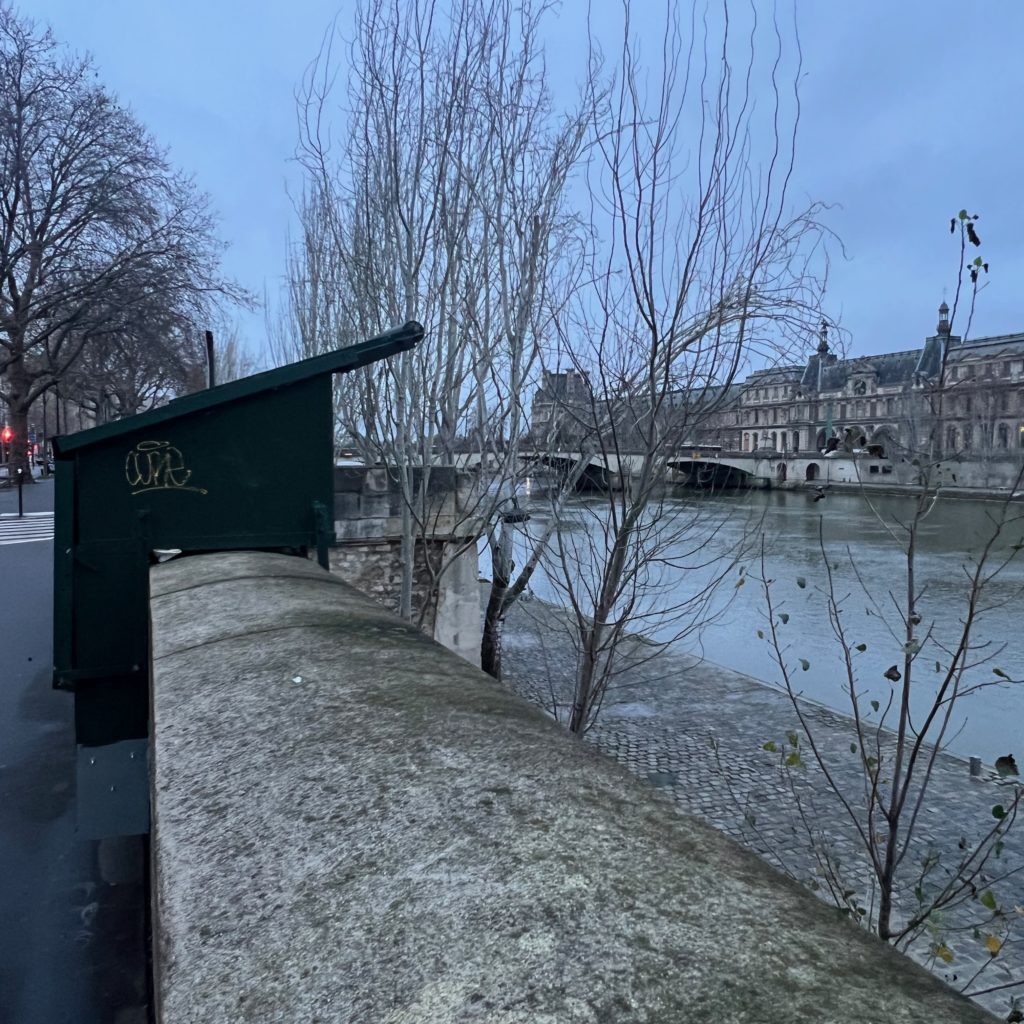
Another mind-stimulating way to spend a quiet Parisian morning is to stroll along the lower quays of the Seine, when you can be alone with your thoughts — and perhaps a few swans and boats. What’s more, being so close to the water feels soothing on the senses — and being able to look up to such grand monuments as the Louvre and the Institut de France is sure to encourage lofty notions!
Place Dauphine
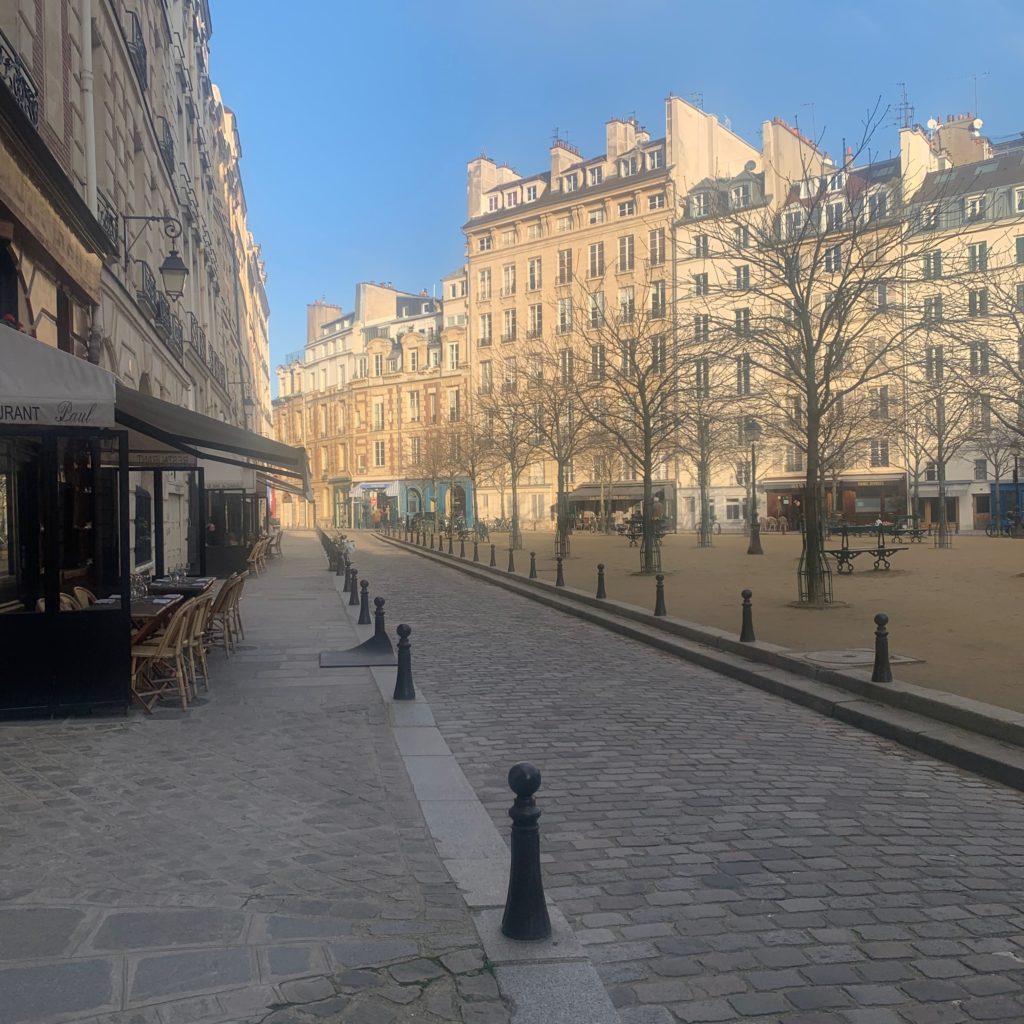
Toward the western tip of the Île de la Cité is Place Dauphine which, for such a centrally located site, is always alluringly hushed. Depending on the weather, you can sit among the horse chestnuts (which bloom pink in April), or take a table at one of the cosy periphery cafés. If you’ve forgotten your notebook, pop into Papeteries Gaubert, also on this triangular ‘square,’ where you can buy all kinds of beautiful stationery that’s just begging to be covered in high-minded opinions and ideas. You can even buy the same blue paper once preferred by the beloved French author Colette. And on that note …
The Palais-Royal

Sidonie-Gabrielle Colette made the Palais-Royal her final abode, in 1938 — at the northern end of the garden, look up to see the first-floor window that is marked by the symbol of a C placed on a star. It was from here that Colette inhaled the linden- and chestnut-infused air, and reminisced on her Burgundian childhood. To this day, the Palais-Royal garden still feels like a place portal as much as a time portal — it’s like you’ve stumbled into a slice of old French village life. It’s easy to see why Colette so loved this enclosure, how it can stimulate a creative mind. You can walk the lime tree-lined allées, as neat and straight as lines on a page, or sit by the large pond — some chairs are even stamped with uplifting lines from French poetry. Or, claim a bench — each has been etched with words of wisdom from Colette herself. One motto to live by: ‘To be astonished is one of the surest ways of not growing old too quickly.’

